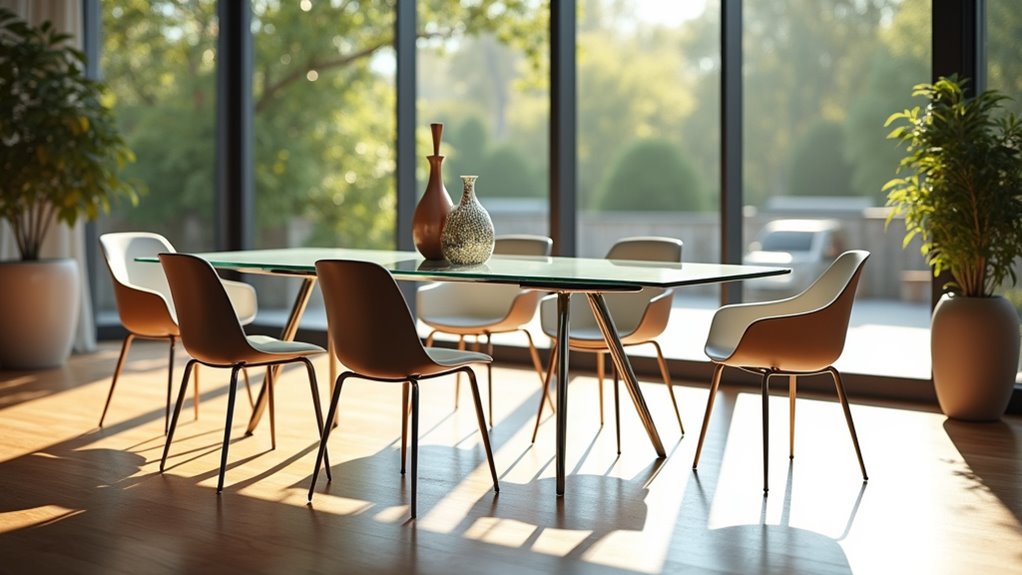Glass dining tables are not out of style; they maintain a timeless appeal in modern design. Their versatility allows them to complement various aesthetics, from minimalist to eclectic spaces. Innovations in textured surfaces and mixed materials enhance their appeal. Current consumer trends show a preference for transparent designs, particularly in urban settings. Thus, the combination of function and style keeps glass dining tables relevant. Exploring their full potential reveals even more insights into their enduring popularity.
Key Takeaways
- Glass dining tables maintain a timeless appeal, complementing various design styles and enhancing modern interiors.
- Trends in urban living support glass tables, as their transparency creates an illusion of spaciousness.
- The popularity of mixed material designs, combining glass with wood or metal, keeps glass tables in vogue.
- Innovations in colored and textured glass provide fresh, creative options that align with current consumer preferences.
- Glass dining tables remain functional with easy maintenance and aesthetic charm, ensuring they are far from out of style.
Timeless Appeal of Glass Dining Tables

Although trends in home decor may shift over time, the timeless appeal of glass dining tables remains a constant in modern design. Their elegant aesthetics enhance any dining environment, introducing a sense of visual lightness that is particularly advantageous in smaller spaces. The transparent nature of glass allows for the illusion of spaciousness, making rooms feel airier and more open. This versatility supports various styles, from minimalist to eclectic, while complementing diverse materials like fabric or leather. Additionally, glass dining tables are made from tempered glass for durability and safety, ensuring they remain a practical choice for family dining. As increasing preference for lightweight furniture continues, glass dining tables fit seamlessly into this trend while offering flexibility and functionality. Moreover, many contemporary designs feature high gloss finishes that amplify their sleek appearance, making them even more appealing for modern settings.
Trending combinations of glass tops with wooden or matte black bases emphasize clarity without sacrificing presence. Unique shapes, including irregular and asymmetrical designs, further contribute to their modern charm, ensuring that glass dining tables continue to thrive in contemporary interiors.
Practical Benefits and Maintenance Considerations
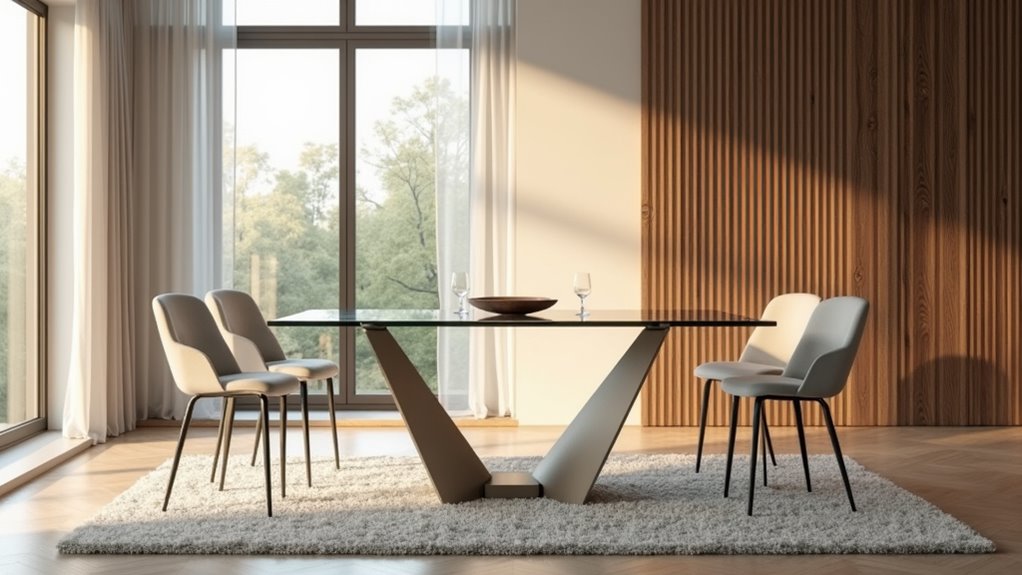
Glass dining tables combine aesthetic appeal with practical benefits, particularly when it comes to maintenance and longevity. Their non-porous surfaces resist staining and discoloration, promoting hygiene through easy cleaning methods, such as specialized glass cleaners or natural mixtures like white vinegar and water.
Glass dining tables offer beauty and practicality, featuring non-porous surfaces for easy cleaning and lasting hygiene.
Using soft, non-abrasive microfiber cloths prevents scratches, while regular cleaning maintains clarity. Surface protection is essential; employing placemats, coasters, and table mats safeguards against heat and scratches.
Additionally, avoiding heavy, sharp objects and hot items on the glass minimizes damage risk. Properly positioning tables away from high-traffic areas and monitoring children and pets further preserves integrity.
This attention to maintenance not only enhances the table’s aesthetic appeal but also extends its lifespan significantly.
Innovations in Design and Material Combinations
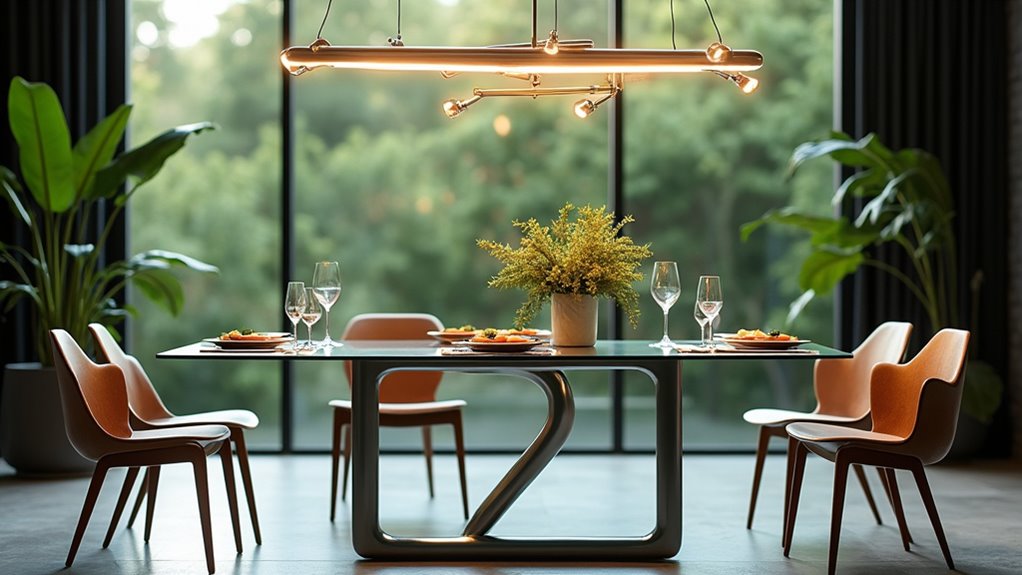
Recent innovations in design and material combinations have transformed the traditional glass dining table into a versatile centerpiece in modern homes. The incorporation of textured surfaces, colored glass, and mixed materials enhances both aesthetics and functionality, appealing to a broad spectrum of tastes.
- Textured Surfaces: Etching techniques introduce unique designs, turning each table into a personalized art piece.
- Mixed Material Combinations: Pairing glass with wood, metal, or fabric chairs evokes a balance of elegance and comfort, catering to diverse interior styles.
- Colored Glass: Introducing vibrant hues allows for creative design integration, challenging traditional notions of transparent glass.
These innovations not only elevate the visual appeal of glass dining tables but also adapt them to contemporary living needs, emphasizing their relevance in today’s design landscape. Moreover, the use of elements like solid hardwood can further enhance the durability and character of dining spaces, making these tables not just trendy but also timeless.
Consumer Trends and Preferences in 2025
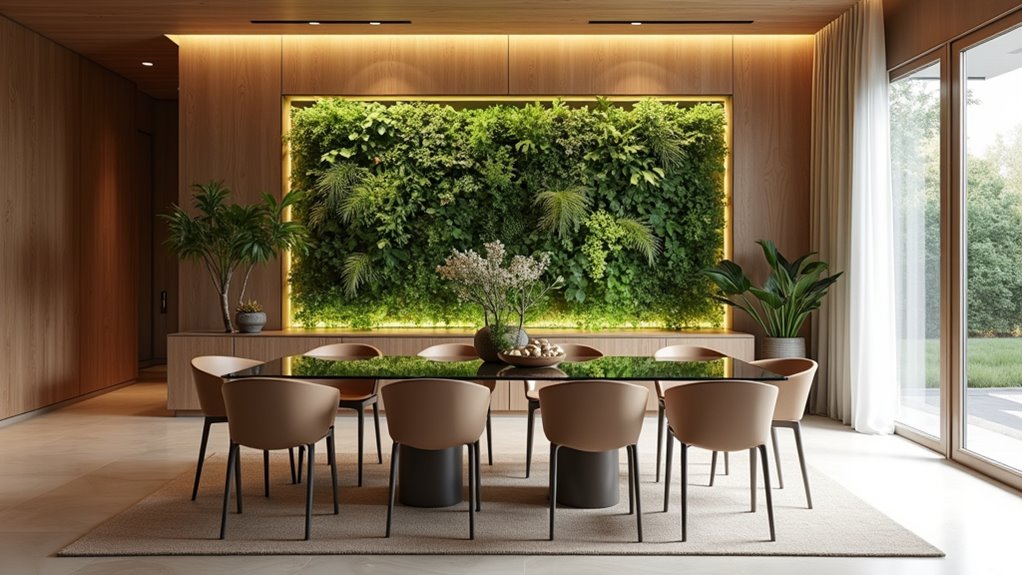
The evolution of glass dining tables reflects a broader shift in consumer trends and preferences anticipated for 2025. Increasingly, urban living environments influence choices, as transparency in design enhances space perception, critical for compact areas.
Sustainability trends drive consumer demand towards tempered glass, favored for its durability and ease of maintenance. Popular styles showcase clear glass tops paired with wooden or metal bases, promoting a modern aesthetic while emphasizing craftsmanship. Additionally, the rise of sustainable materials, such as those used in the Koala Serenity Dining Table, is becoming increasingly significant for eco-conscious consumers.
Round and oval shapes save space, aligning with practicality. Moreover, extendable tables gain traction, merging functionality with sophistication. However, concerns regarding the visibility of marks affect some preferences, indicating a balance between elegance and practicality remains essential in contemporary consumer behavior.
The Future of Glass Dining Tables in Modern Interiors
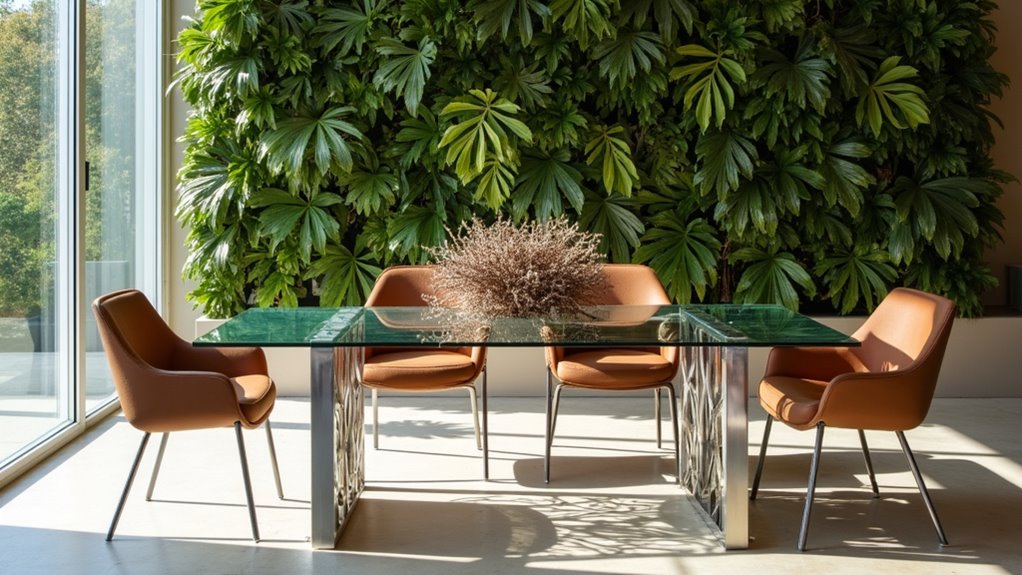
As urban living increasingly prioritizes open, multifunctional spaces, the role of glass dining tables in modern interiors becomes ever more significant. Their capacity for architectural integration allows for seamless space optimization, enhancing both visual flow and environmental versatility.
Key future trends include:
Key future trends highlight unique shapes, mixed materials, and modular options for glass dining tables, enhancing both style and functionality.
- Unique Shapes: Asymmetrical and sculptural designs are favored, moving away from traditional forms.
- Mixed Materials: Pairing glass with wood and metal creates striking contrasts and enhances structural integrity.
- Modular Options: Flexible, extending glass tables adapt to evolving hosting needs, reflecting contemporary lifestyle demands.
These features emphasize not only aesthetic appeal but also the practicality and resilience needed for daily use, solidifying glass dining tables as essential components in modern interiors.

